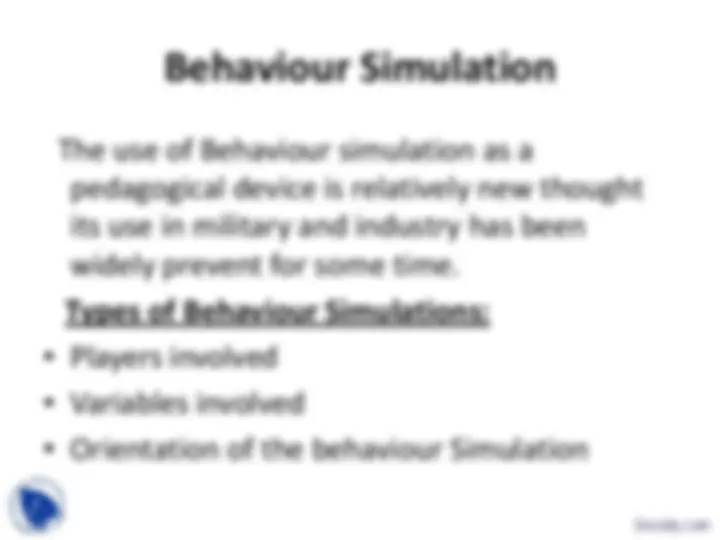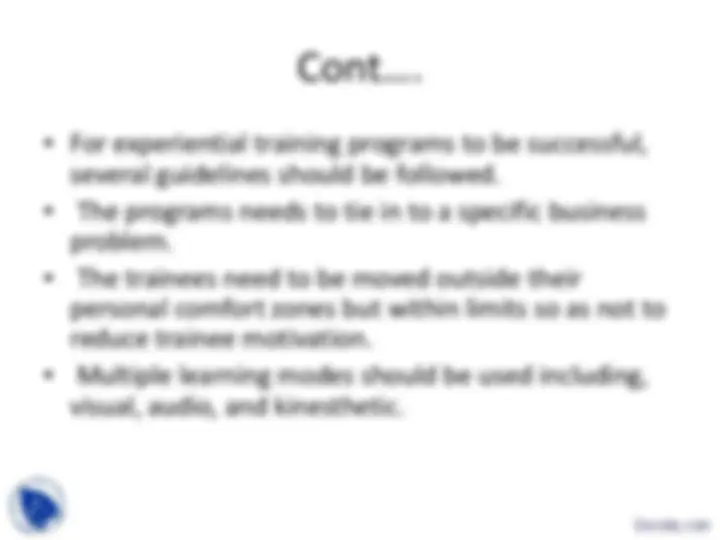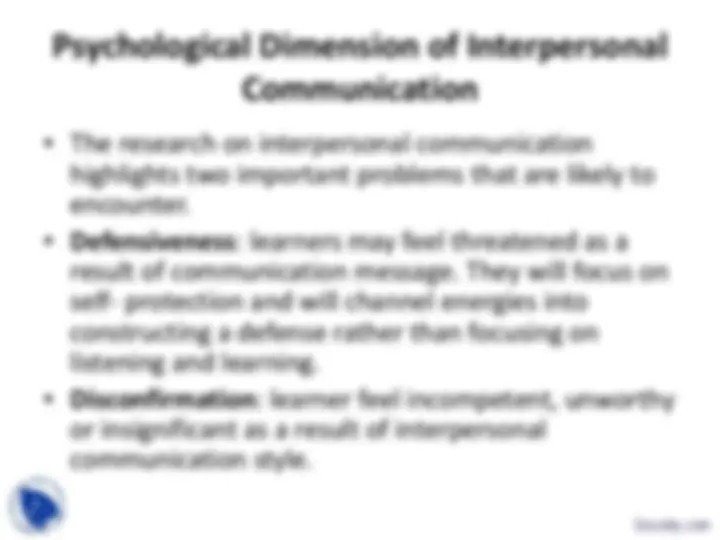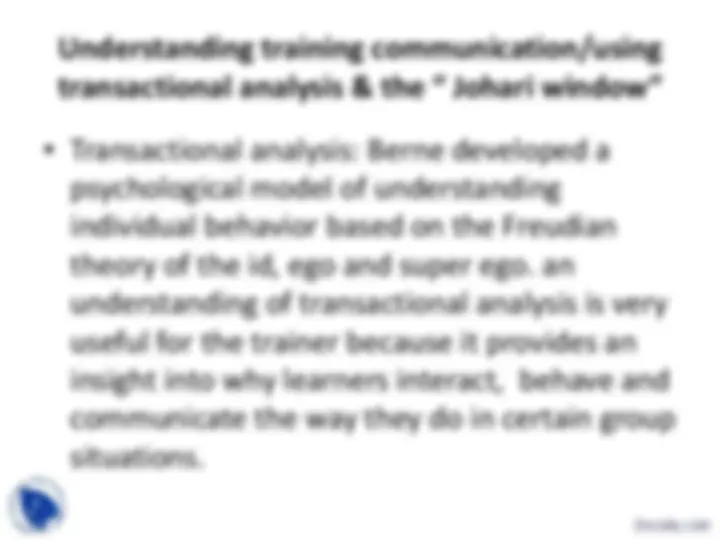



















Study with the several resources on Docsity

Earn points by helping other students or get them with a premium plan


Prepare for your exams
Study with the several resources on Docsity

Earn points to download
Earn points by helping other students or get them with a premium plan
Community
Ask the community for help and clear up your study doubts
Discover the best universities in your country according to Docsity users
Free resources
Download our free guides on studying techniques, anxiety management strategies, and thesis advice from Docsity tutors
This lecture was delivered by Pooja Rathore at Anand Agricultural University for Training and Development course. It includes: Brainstorming, Steps, Enthusiastic, Workshop, Equipments, Machinery, Advantages, Psychomotor, Fishbowl
Typology: Slides
1 / 25

This page cannot be seen from the preview
Don't miss anything!


















The word ‘workshop’ has been borrowed from engineering, which basically means a room or building in which things are made or repaired by a technical expert/ mechanic by using tools, equipments and machinery.
Fishbowl is a strategy used not only in classrooms but also in business meetings and other settings where group dynamics are important. Fishbowl Training Process: The Fishbowl training Process involves between 10 and 20 people. A circle of chairs is arranged in the centre of a room with chairs arranged around the outside. Four or five chairs are arranged in an inner circle. These are the chairs meant for fish set of people. The remaining chairs are arranged in concentric circle outside which are known as the fishbowl.
“Pedagogy” the term derived from the Greek words paid (child) and agogus (leading0. Pedagogy, therefore, means quit literally the art and science of teaching children. This self-directed learner has the following needs:
The originator of psychodrama is J.L. Moreno, and his basic theories about it are contained in four volumes-The Theatre of Spontaneity and Psychodrama, 1047. Psychodrama places each man at the centre of the world, showing how he can more truly become its author. Yet become “the creator” man must also know himself and turn inside outward so the world can see him.
The use of Behaviour simulation as a pedagogical device is relatively new thought its use in military and industry has been widely prevent for some time. Types of Behaviour Simulations: